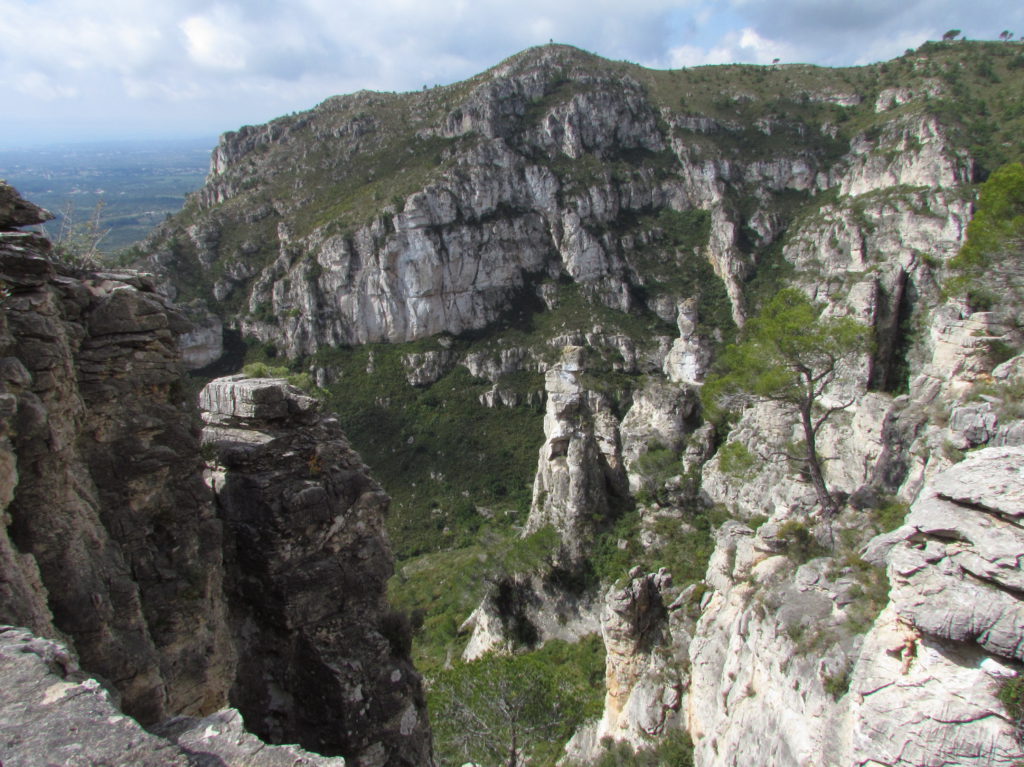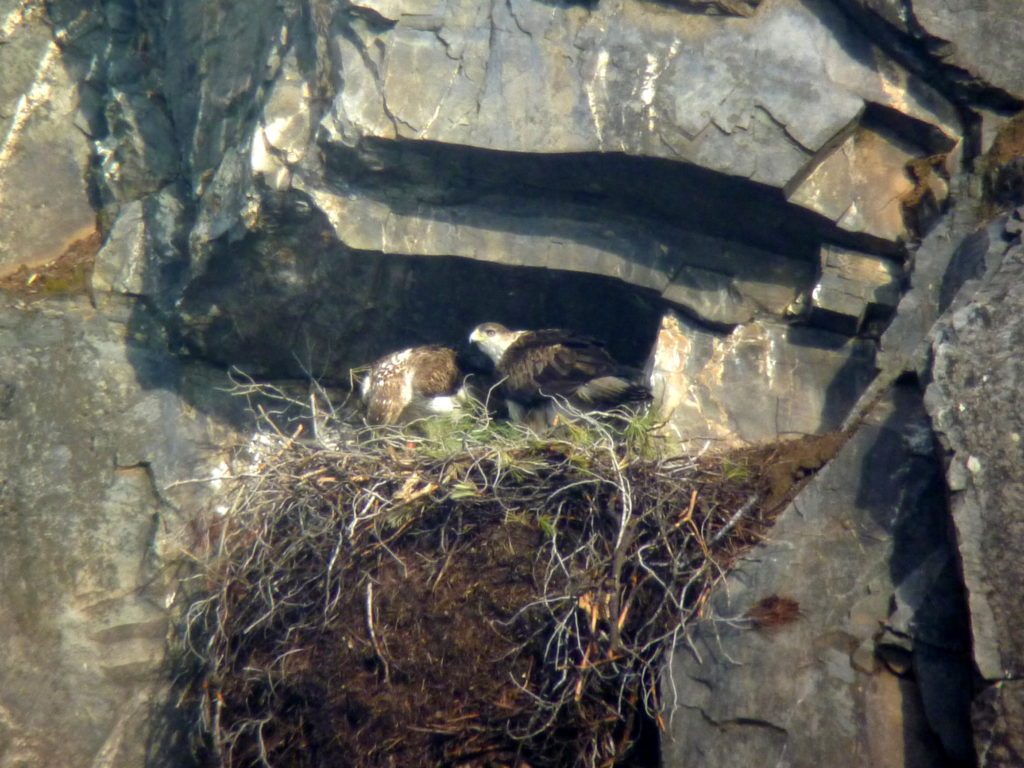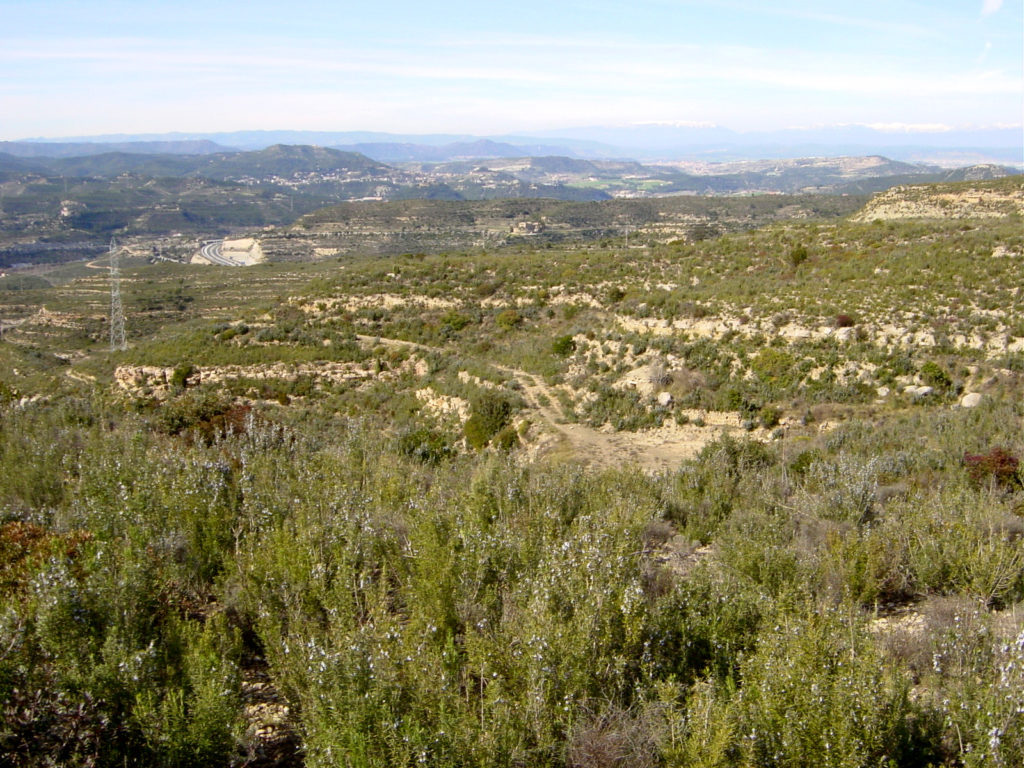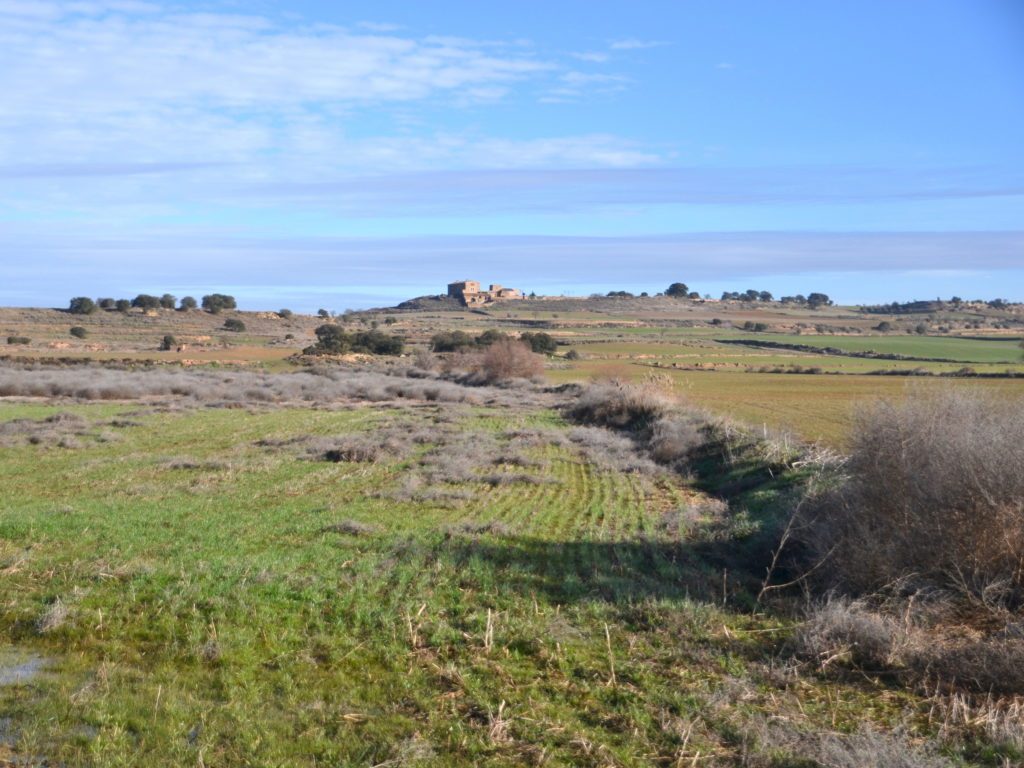Bonelli’s eagle
Knowledge of the areas and habitats used by Bonelli’s eagles is a key aspect of the biology of this species. It is known that adult eagles live in pairs and occupy the same territory throughout the year, while juveniles move to dispersal areas where they undertake an independent life for a period of 2 or 3 years, until they settle in an own territory and mate. However, there is still a lack of information on the areas and habitats used by eagles in both breeding territories and dispersal areas, situation that we aimed to solve with several studies on this issue.
To describe the spatial use by eagles within the territories, 18 eagles from 12 different territories in Catalonia were radiotracked throughout a year during the years 2002–2006. Results showed that during the non-breeding season eagles had larger home-ranges and stayed further from nests, although breeding areas are also important since they used them to rest and roost. Thus, it would be expedient to regulate disturbing leisure activities (climbing, hiking and mountain biking) all year round, given that there are indications that these may be detrimental for the species outside the breeding period. In addition, results also revealed that eagles hunt in areas far away from nesting sites, which are key for the conservation of the species, but they are not protected despite their great biological value.
On the other hand, we used information on 17 radiotracked breeding individuals to characterize the key habitats used by Bonelli’s eagle within their territories. The main habitats identified within the home-range area were scrubland, coniferous forests, cropland, sclerophyllous forests, rock outcrops and urban areas. Eagles preferred rocky habitats as breeding areas and scrubland as foraging areas, as these hold the highest abundance of rabbits and red-legged partridges, their main preys. In addition, territory size was inversely correlated with the proportion of scrubland, suggesting that this is a key habitat for the species conservation.
Finally, between 1986-93, we wing tagged and banded 122 juveniles hatched in Catalonia to obtain data on the location of their dispersal areas. Thanks to this, dispersal areas in Catalonia were identified, where most individuals remained during their dispersal period, although some long-distance dispersers (>200 km from their nests) were found in central and south-eastern Spain. In a later study to describe the locations and general characteristics of juvenile dispersal areas of Bonelli’s eagles in Catalonia, we conducted autumn and winter counts by car during 1991-94. Results showed that Bonelli’s eagles selected settlement areas mainly on food availability rather than their topographic and landscape patterns, suggesting that sensible game management is an essential tool to achieve adequate prey availability for this species in its dispersal areas.
All these studies are essential for managers responsible for the conservation of this species, since they offer relevant information on which areas and habitats should be managed and protected. For these reasons and given that landscapes are not static but they are constantly changing, it is necessary to keep on studying the spatial use by Bonelli’s eagles and, therefore, adapting land planning to the new areas used by the species.
These studies were carried out thanks to the support from several administrations, organisations and companies. Among them, Miguel Torres S. A., Diputació de Barcelona, the Ministerio de Educación y Ciencia, and the Comissió Interdepartamental de Recerca i Innovació (CIRI) from the Generalitat de Catalunya.
Related publications
A44.- REAL, J., BOSCH, R., TINTÓ, A. & HERNÁNDEZ-MATÍAS, A. 2016. Identifying key habitats for the conservation of Bonelli’s Eagle Aquila fasciata using radiotracking. Ibis, 158: 556–568. doi:10.1111/ibi.12372 pdf
A25.- BOSCH, R., REAL, J., TINTÓ, A., ZOZAYA, E. & CASTELL, C. 2010. Home-ranges and patterns of spatial use in territorial Bonelli’s Eagles Aquila fasciata. Ibis, 152 (1): 105-117. doi: 10.1111/j.1474-919X.2009.00985.x. pdf
A19.- REAL, J. & MAÑOSA, S. 2001. Dispersal of juvenile and immature Bonelli’s eagles in Northeastern Spain. Journal of Raptor Research, 35 (1): 9-14. pdf
A13.- MAÑOSA, S. REAL, J. & CODINA, J. 1998. Selection of settlement areas by juvenile Bonelli’s eagle in Catalonia. Journal of Raptor Research, 32 (3):208-214. pdf
D4.- ZOZAYA, E. L. 2005. Uso del espacio y comportamiento parental del Águila perdicera (Hieraaetus fasciatus) durante la época de cría. Universitat de Barcelona. Memoria de Estudios Avanzados en Zoología y Suficiencia Investigadora.
D3.- BOSCH, R. 2004. Selecció d’hàbitat i ús diferencial de l’espai per l’àliga perdiguera (Hieraaetus fasciatus) a les Serralades Litorals Catalanes. Universitat de Barcelona. Memòria de Diploma d’Estudis Avançats en Zoologia i Suficiència Investigadora.
E33.- REAL, J. 2010. Etendue du domaine vital et sélection de l’habitat de l’Aigle de Bonelli Aquila fasciata en Catalogne : implication pour la conservation. In: SCHER O. & M. LECACHEUR (Eds.), 2011. La conservation de l’Aigle de Bonelli. Actes du colloque international, 28 et 29 janvier 2010, Montpellier. CEN LR, CEEP, CORA FS & DREAL LR: 43-45. pdf
E28.- BOSCH, R., REAL, J. & TINTÓ, A. 2009. Home Range and Habitat Selection in Bonelli’s Eagle (Aquila fasciata): Implications for Conservation. In: Raptor Research Foundation. 2009 Annual Conference. 29 September – 4 October 2009. Pitlochry, Scotland. pdf
E21.- LÓPEZ, E., PERIS, A., BROS, V., GUINARD, D., BOSCH, R., TINTÓ, A. & REAL, J. 2005. Determinació de l’àrea de campeig i el ritme d’activitat de l’àliga cuabarrada (Hieraaetus fasciatus) en el Parc Natural de Sant Llorenç del Munt i l’Obac. VI Trobada d’Estudiosos de Sant Llorenç del Munt i l’Obac. Sant Llorenç Savall (Barcelona). pdf




